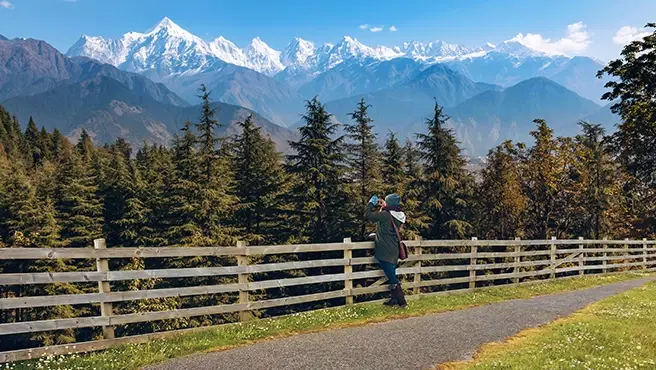
Hotels
•03 min read

Kaza, a hidden gem for travelers, captures the heart with its dramatic landscapes, rich culture, and intriguing high-altitude desert charm. Whether you are an adventure seeker or simply in quest of serenity, this destination offers something unique. In this post, we guide you through the best time to visit Kaza by offering a detailed checklist for planning an unforgettable trip. You will learn about the weather patterns, seasonal highlights, ideal activities, practical travel tips, and accommodation insights that can help turn your Kaza trip into the adventure of a lifetime.
Kaza is renowned for its unique high-altitude desert climate, where the landscape tells a story of extremes. Throughout the year, you can find a stark contrast between chilly winters and pleasantly warm summers. Temperatures vary widely, and the thin mountain air keeps the overall climate quite arid. These weather conditions directly influence travel experiences, from the thrill of trekking under clear blue skies to the magical beauty of a snow-blanketed valley.
Understanding Kaza's weather is key to planning your journey. Here is a breakdown of what you can expect during each season:
Summer (March to June): The weather in these months is generally pleasant, making it the perfect time for trekking, sightseeing, and exploring the outdoors without extreme discomfort.
Monsoon (July to September): During this season, occasional rainfall brings new life to the landscapes. While the greenery is a treat for nature lovers, travelers should be aware of possible road closures due to landslides.
Winter (October to February): The winter months transform Kaza into a snowy wonderland. Heavy snowfall and freezing temperatures create an ethereal scene, although visitors should prepare for extreme cold and sometimes challenging travel conditions.
The best time for your Kaza trip depends on your interests:
Adventure Sports: For adrenaline junkies looking to indulge in trekking and mountaineering, the summer months, particularly May and June, offer optimal conditions.
Snowfall Enthusiasts: If you dream of walking through a winter wonderland, plan your visit between December and February to experience Kaza’s majestic snowfall.
Family Trips: Families will appreciate the mild and comfortable weather found in March and April, making it an ideal time for a balanced, enjoyable holiday.
Tourist seasons in Kaza can be broadly divided into peak and off-peak periods. Peak seasons, mainly in late spring and winter, draw a larger crowd, which means more people but also more vibrant local activities and events. On the contrary, the off-season offers a quieter, more intimate experience with fewer people and a chance to explore the serenity of the region. Traveling during off-peak times can also mean lower accommodation rates and a more personal connection with the landscape.

Preparation is essential for an enriching experience in Kaza. Here is what you need to consider:
Ensure you carry all the necessary documents such as permits and identification cards.
Pack season-appropriate clothing: warm layers for winter visits, comfortable trekking gear for summer, and waterproof gear during the monsoon.
Consider additional accessories including sunglasses, sunscreen, and sturdy hiking boots.
Planning your travel logistics can make all the difference:
Reaching Kaza: The journey is an adventure in itself. Many travelers prefer road routes, with the nearest airports serving as gateways into the region.
Acclimatization: High altitudes demand adequate acclimatization. Take a couple of days to adjust to avoid altitude sickness.
Winter Safety: If you choose to travel during winter, ensure you have proper clothing and safety equipment to navigate snowy roads and treacherous paths.
Pro Tip: "Plan your Kaza trip for early June to enjoy snow-capped landscapes without the extreme cold of winter. This is also when the roads are more accessible."
Finding the right place to rest is crucial after long days of exploration. Kaza offers a range of accommodations to fit all budgets and preferences. Top-rated hotels provide modern amenities and comfort, while guesthouses and homestays offer a more immersive local experience. You can also opt for eco-lodges that blend sustainable practices with breathtaking views of the high-altitude surroundings.
When selecting your accommodation in Kaza, keep in mind several factors:

Proximity to key attractions and scenic spots.
The range of amenities offered, such as dining options and wellness facilities.
Reviews from previous guests that highlight the quality of hospitality and service.
It is highly recommended to book in advance during peak tourist season to secure a spot that best suits your itinerary.
April to June provides pleasant weather, while October to February is perfect for snowfall enthusiasts.
4-5 days is an ideal duration to explore Kaza and its surrounding attractions.
Yes, Kaza experiences heavy snowfall during the winter months from December to February.
Temperatures in December can drop as low as -20°C, demanding proper winter gear.
While the monsoon season brings lush landscapes, travelers need to be cautious due to unpredictable road conditions and potential landslides.
Planning a trip to Kaza begins with understanding its distinct weather patterns and seasonal changes. The best time to visit largely depends on your interests—whether you seek adventure during the warm months, wish to experience the serene beauty of a snowy winter, or prefer a peaceful family vacation in the spring. With the detailed checklist provided on weather, travel preparation, and accommodation tips, you are now better set to customize your journey based on your personal preferences. Kaza remains an enticing destination, offering a blend of adventure, natural beauty, and cultural richness that promises memorable experiences for every traveler.